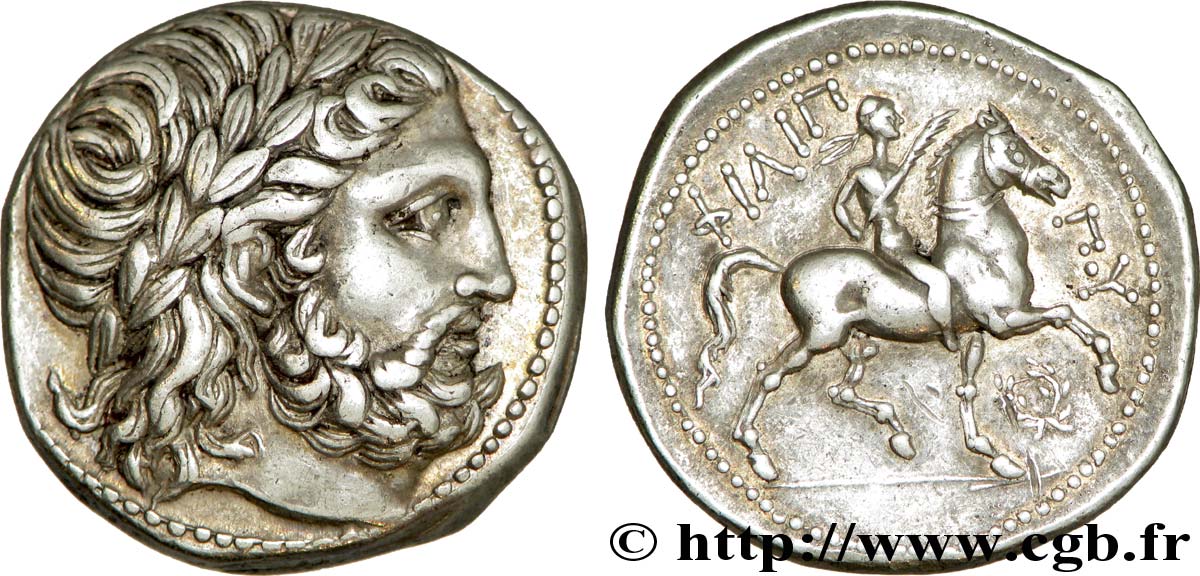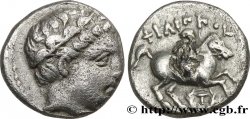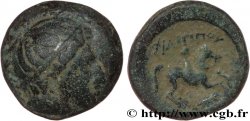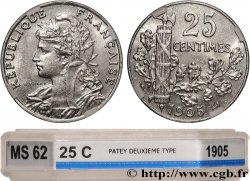v32_0023 - MACEDONIA - REGNO DI MACEDONIA - FILIPPO III ARRIDAIOS Tétradrachme
MONNAIES 32 (2007)
Начальная цена : 950.00 €
Назначить цену : 1 500.00 €
Цена реализации : 1 120.00 €
Количество ставок : 2
Максимальная предлагаемая цена : 1 200.00 €
Начальная цена : 950.00 €
Назначить цену : 1 500.00 €
Цена реализации : 1 120.00 €
Количество ставок : 2
Максимальная предлагаемая цена : 1 200.00 €
Тип Tétradrachme
Дата: 323/322-316/315 AC
Монетный двор / Город: Macédoine, Pella
Металл: silver
Диаметр: 24,5 mm
Ориентация осей монеты: 6 h.
Вес: 14,24 g.
Редкость: R1
Комментарии о состоянии
Exemplaire de qualité exceptionnelle pour ce type sur un flan parfaitement centré des deux côtés. Portrait de toute beauté. Revers avec le grènetis visible. Pas d’usure au revers, mais style un peu pauvre. Magnifique patine de médaillier avec des reflets mordorés
Ссылки в каталоге: :
Происхождение:
Cet exemplaire provient de la vente Lanz 125, 28 novembre 2005, n° 227
Лицевая сторона
Аверс: легенда: ANÉPIGRAPHE.
Аверс: описание: Tête laurée de Zeus à droite.
Обратная сторона
Реверс: Описание: Cavalier au pas à droite, tenant une palme de la main droite ; le cheval lève l'antérieur à droite ; sous le cheval, entre les antérieurs, une couronne fermée.
Реверс: легенда: FILIP-POU
Комментарий
Nouveau groupe pour l’atelier de Pella avec la couronne entre les antérieurs du cheval. Ce symbole relativement rare a été utilisé par l’atelier de Pella sous le règne d’Alexandre III (Le Rider, p. 51, n° 384-387, pl. 16) et à Amphipolis sous Philippe III associé à différentes lettres (Le Rider, pl. 45/22 à 45/28). Même coin de droit que l’exemplaire de la collection Löbbecke conservé à Berlin, n° 519, pl. 22 (A/ 277) associé au foudre et qui ne semblait pas associé à d’autres tétradrachmes. Le coin de revers est donc complètement nouveau et semble pouvoir être attribué à Philippe III en raison de la liaison de coin de droit intergroupe (foudre et couronne). Le revers est légèrement stylisé, le cheval grêle, le cavalier mince avec de grands rubans à la couronne, une palme mince et schématique. Les lettres sont toutes bouletées et l’omicron est figuré sous la forme d’un point.
New group for the Pella mint with the crown between the horse's forelegs. This relatively rare symbol was used by the Pella mint during the reign of Alexander III (The Rider, p. 51, no. 384-387, pl. 16) and at Amphipolis under Philip III associated with different letters (The Rider, pl. 45/22 to 45/28). Same obverse die as the copy from the Löbbecke collection in Berlin, no. 519, pl. 22 (A/ 277) associated with the thunderbolt and which did not seem to be associated with other tetradrachms. The reverse die is therefore completely new and seems to be attributable to Philip III because of the intergroup obverse die connection (thunderbolt and crown). The reverse is slightly stylized, the horse slender, the rider slim with large ribbons to the crown, a thin and schematic palm. The letters are all rounded and the omicron is represented in the form of a point
New group for the Pella mint with the crown between the horse's forelegs. This relatively rare symbol was used by the Pella mint during the reign of Alexander III (The Rider, p. 51, no. 384-387, pl. 16) and at Amphipolis under Philip III associated with different letters (The Rider, pl. 45/22 to 45/28). Same obverse die as the copy from the Löbbecke collection in Berlin, no. 519, pl. 22 (A/ 277) associated with the thunderbolt and which did not seem to be associated with other tetradrachms. The reverse die is therefore completely new and seems to be attributable to Philip III because of the intergroup obverse die connection (thunderbolt and crown). The reverse is slightly stylized, the horse slender, the rider slim with large ribbons to the crown, a thin and schematic palm. The letters are all rounded and the omicron is represented in the form of a point








 Cообщить об ошибке
Cообщить об ошибке Распечатать страницу
Распечатать страницу Отправить мой выбор
Отправить мой выбор Задать вопрос
Задать вопрос Consign / sell
Consign / sell
 Информация
Информация










